Angkor Thom is the center of the Angkor temple area in Siem Reap province, Cambodia. Angkor Thom translates into the “Great City”, and is the name of the huge capital complex build by King Jayavarman VII in the late 12th century. Angkor Thom was the longest-lasting capital city of the ancient Khmer Empire, thriving until it was sacked by the Ayutthaya Kingdom from Siam (Thailand) in the late 14th century.
Scholars have suggested that the city of Angkor Thom is organized as a mandala or a sacred diagram of the universe, based on it’s square, symmetrical layout. The city of Angkor Thom is a large square, outlined by walls that measure 26 feet (8 meters) high and 1.86 miles (3 km) on each side. The walls are built of laterite. Laterite is a type of earthy soil formed by rock decay, that hardens into solid rock in air. This combination makes it easy to use in construction, and durable to survive the ages.
The enclosed city measures roughly 2225 acres (900 hectares) and is surrounded by a large moat. Together, the walls and moat are intended to symbolize the continents and oceans of a mandala. Entry to the city is through one of five causeways that lead to the five gates through the city’s walls. The bridges and gates are located at the cardinal directions and lead directly to the Bayon Temple, which is situated at the center of Angkor Thom. The Bayon Temple was the King’s royal temple, and symbolized Mt. Meru, the center of the Hindu and Buddhist universes. The fifth gate is called the Victory Gate, and leads directly to the Royal Palace. This gate was likely used as the King’s daily entry/exit to the city.
The Southern Gate of Angkor Thom is also called Tonle Om Gate. The Southern Gate is entered across a grand causeway that crosses the 110 yard (100 m) wide moat. The moat is adorned on either side by a naga railing, beginning with a massive stone carving of a seven-headed Naga (mythical serpent) being held by a multi-armed and multi-headed giant. On the railings there are 54 stone gods (devata) and 54 stone demons (asura) on each side pulling on the body of the Naga serpent, reminding historians of the famous myth, Churning of the Sea of Milk.
The Bayon Temple is surrounded by towers and pavilions that are topped with sculptures of three or four smiling faces. There is disagreement among scholars about the identity of the faces, some of them thinking they represent Buddhist or Hindu deities. But, many of the scholars point out that the faces resemble the remaining sculpture of King Jayavarman VII, and may just be many sculptures of the King looking down on his city. There are 37 face towers remaining on the third level of the temple. But, historical documents and plans suggest there were originally either 49 or 59 total towers.
The Bayon Temple is also home to many detailed bas-reliefs. The outer enclosure (level one) has detailed bas-reliefs of Khmer daily life in the early 13th century, and historical events such as Khmer’s battle with the Chams.
The inner enclosure (level two) has mostly religious bas-reliefs. It was thought to have been at least partly constructed during the reign of Jayavarman VIII, as the inner reliefs feature more Hindu symbolism and the Khmer had reverted to Hinduism by that time.
Adorning the road between the Victory Gate and the Royal Palace are two terraces, the Terrace of the Elephants and the Terrace of the Leper King. The terraces were also built by King Jayavarman VII at the end of the 12th century. The Elephant terrace stretches out over a length of more than 300 meters from the Baphuon Temple in the South to the Leper King terrace in the North.
The Terrace of the Elephants is named for the sculptures in high relief of elephants and their mahouts (riders). In several areas large elephant heads protrude out from the wall, their trunks forming pillars extending to the ground.
The Terrace of the Leper King was originally called that because locals believed the statue was a depiction of King Yasovarman I, who suffered from leprosy. It has since been established as more likely that the statue represents Yama, the God of death.
The Terrace of the Leper King is some 80 feet (25 meters) long, and is completely covered on both the inside and outside walls with high relief sculptings of Naga snakes, armed guardians, Garudas (bird-like Hindu deity) and female celestial beings.
Across from the Royal Terraces is a complex of 12 towers called Prasat Suor Prat. The name translates as “The towers of the tight-rope dancers” in English. It’s believed that the towers were used used to support a high wire which was stretched between them.
Angkor Thom is an amazing place to visit, and is on our list of Top 5 things to see in Angkor Cambodia.

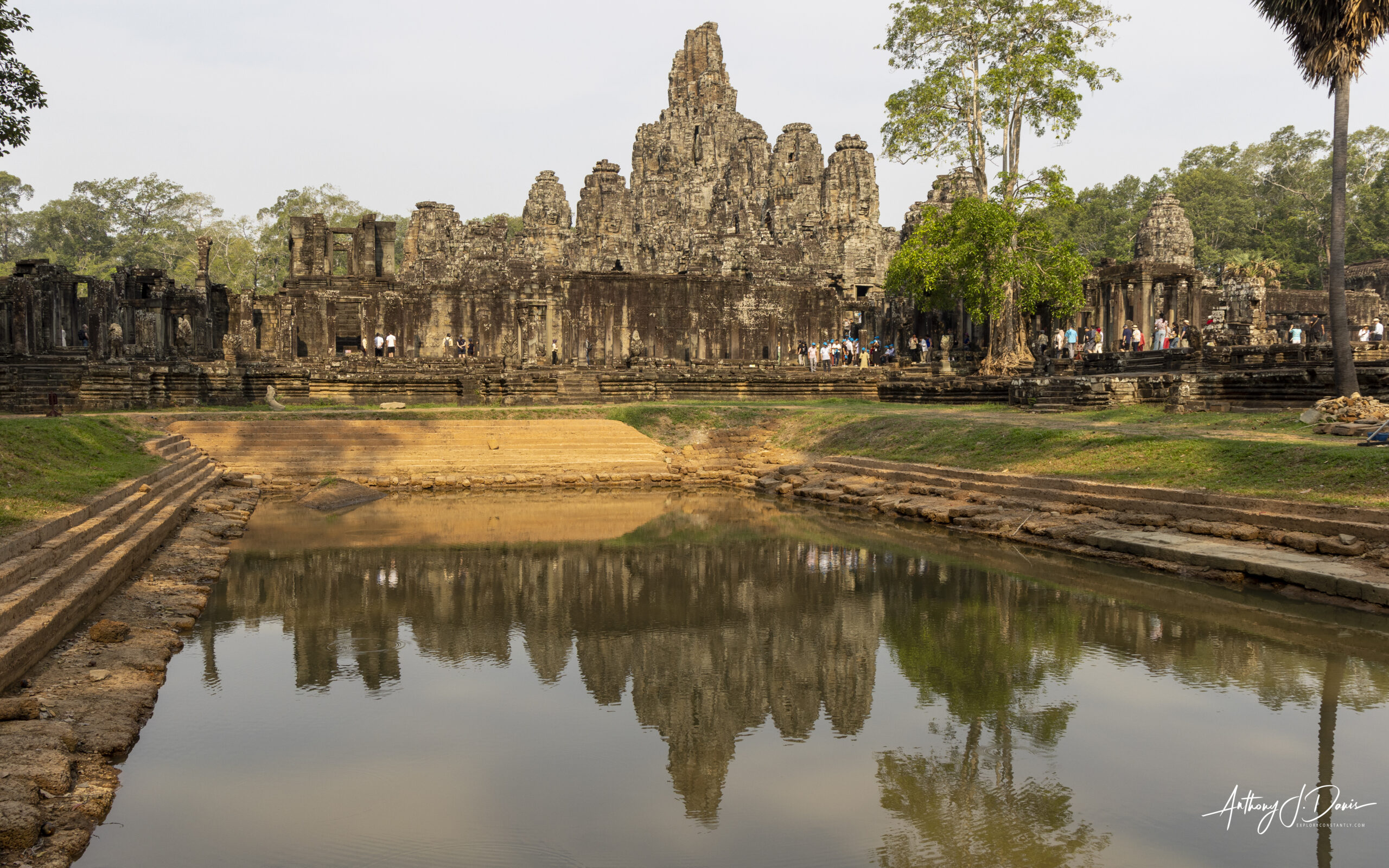
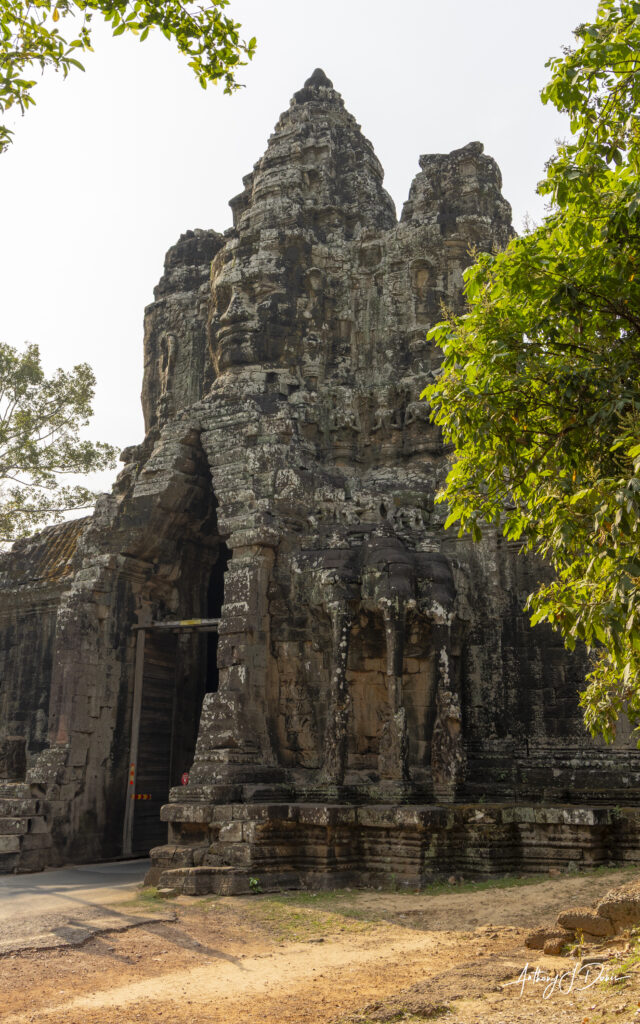
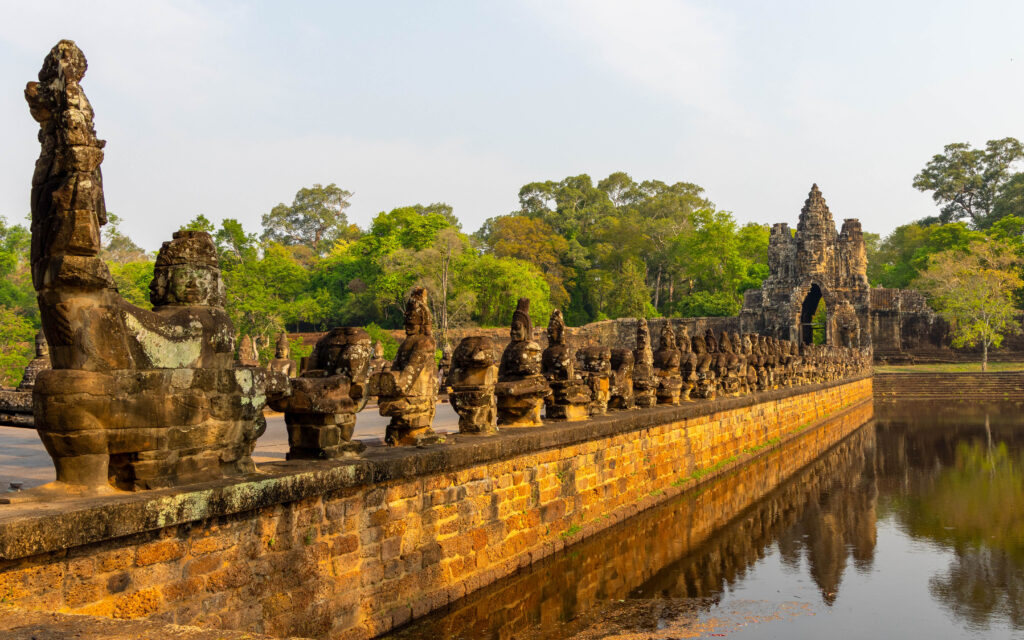
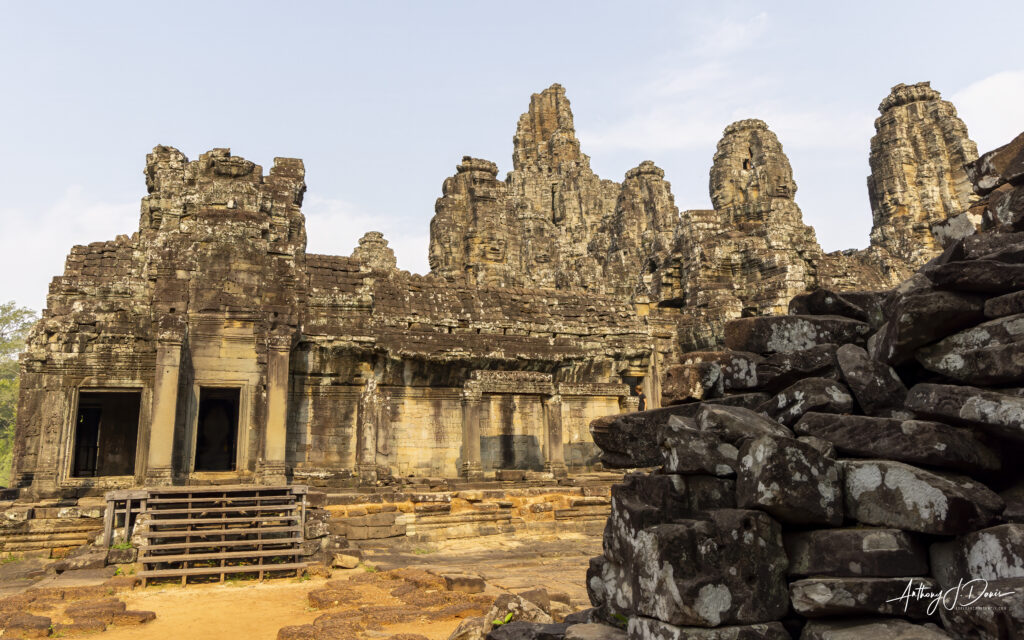
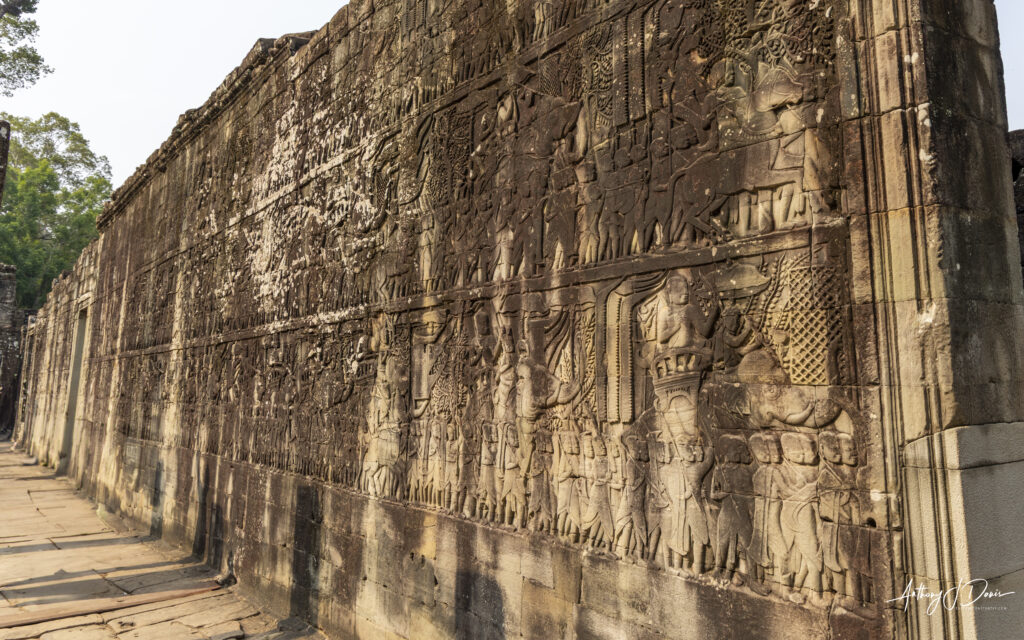
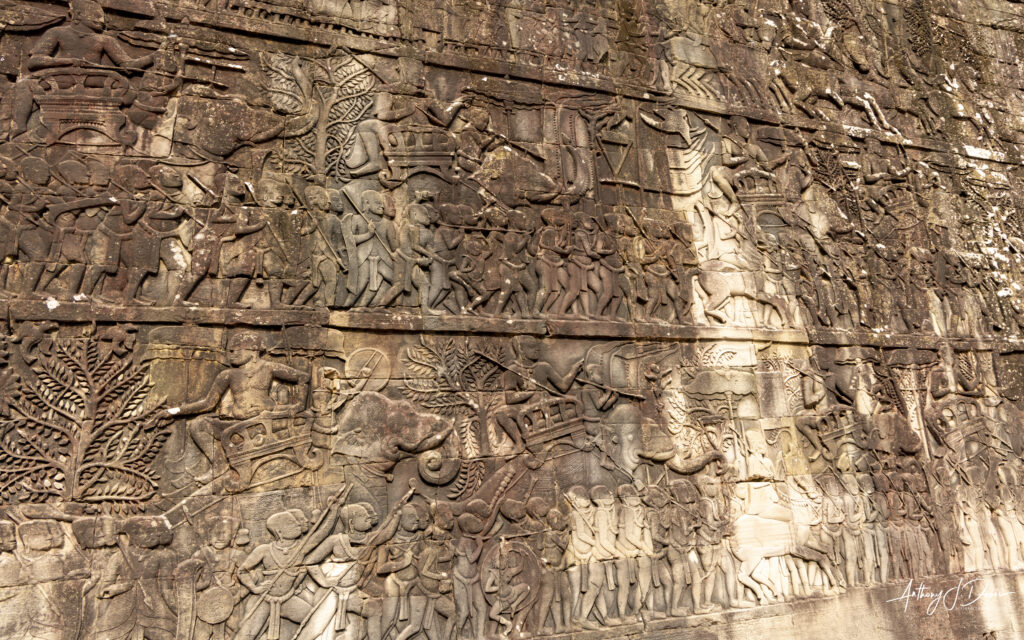
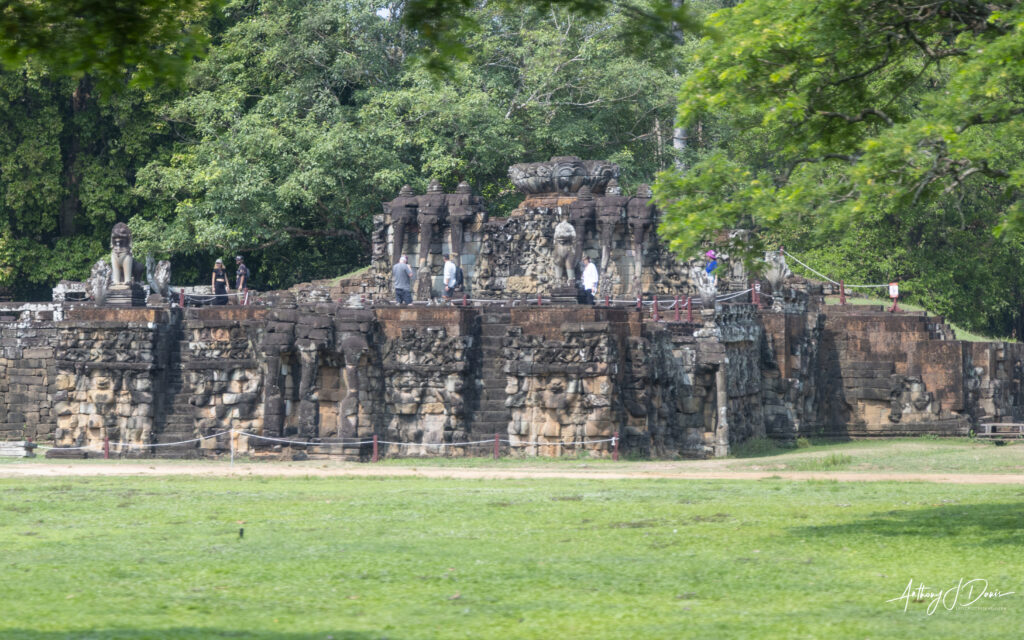
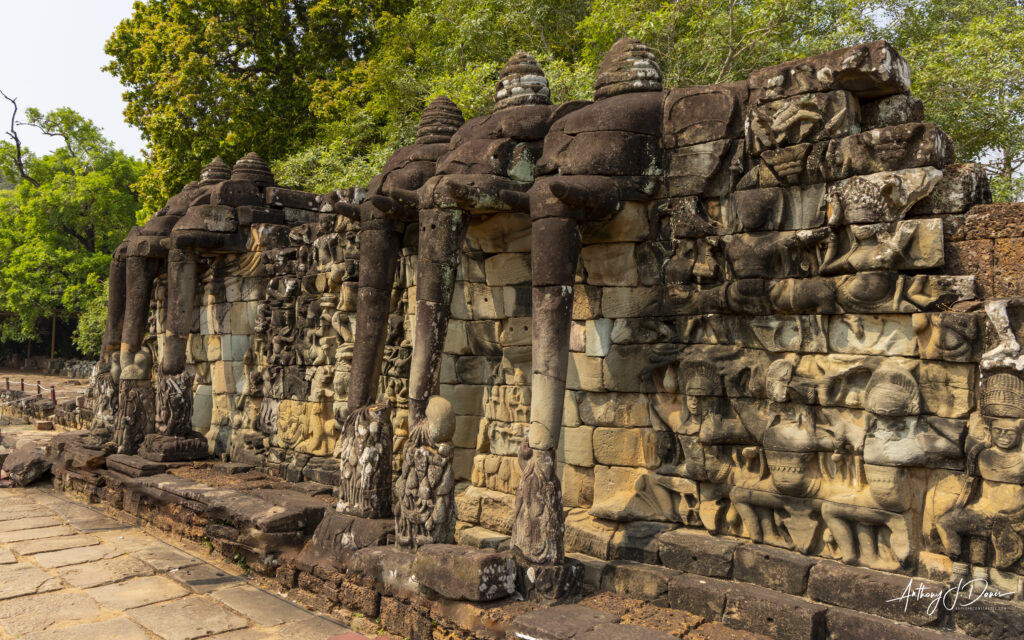
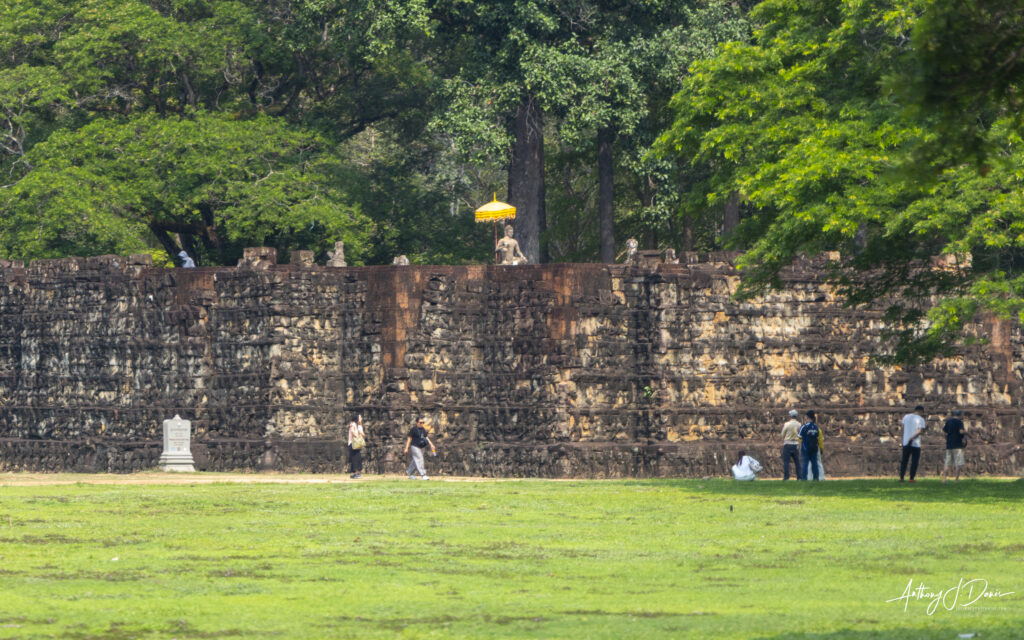
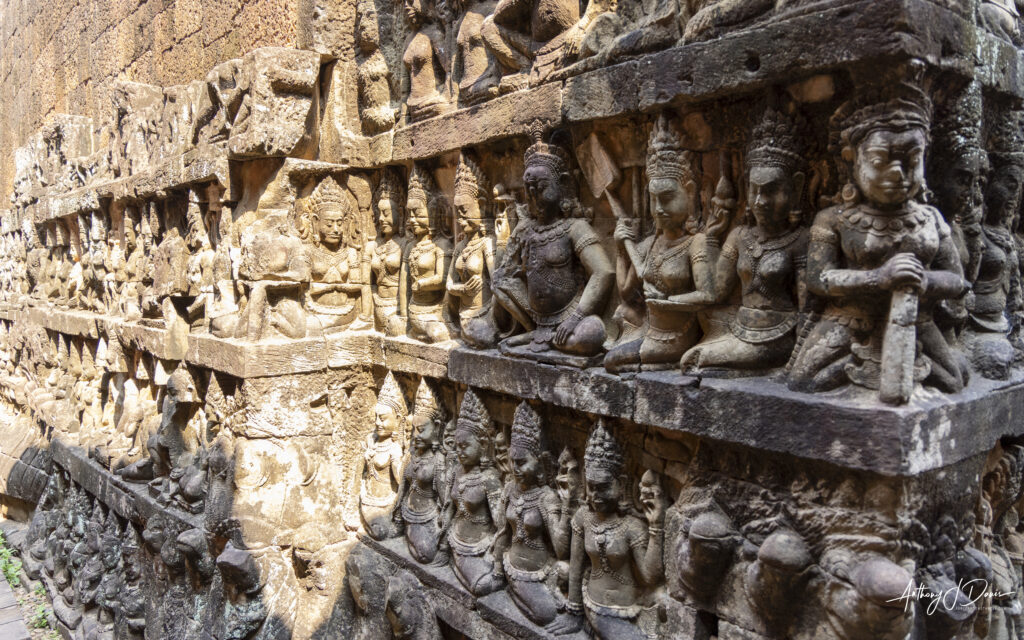
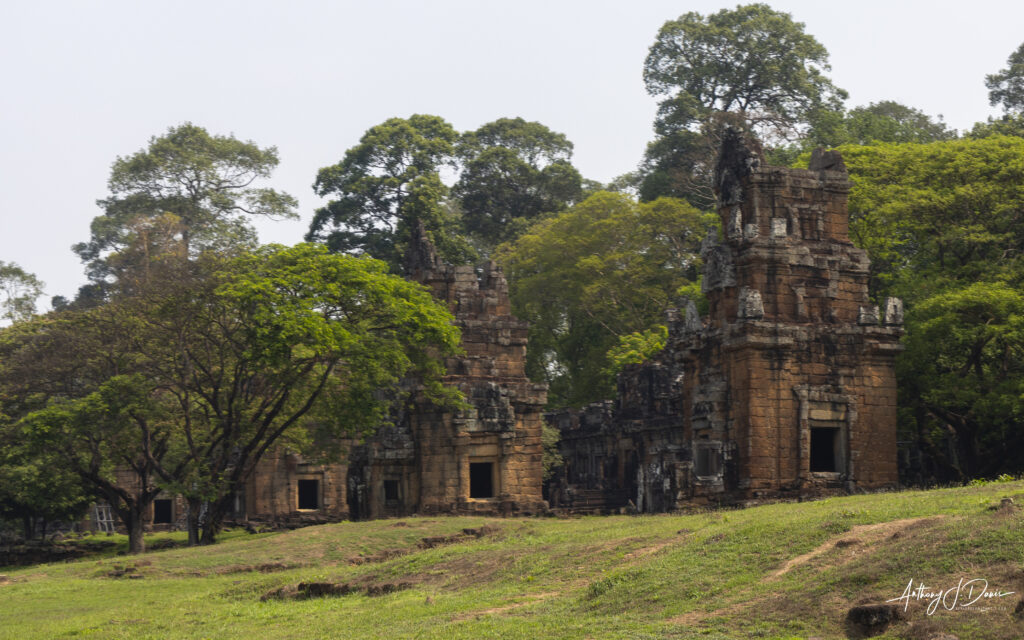
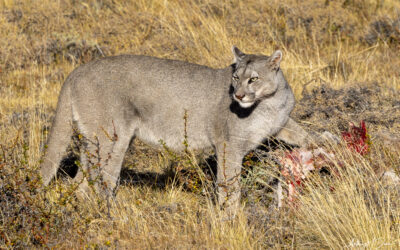
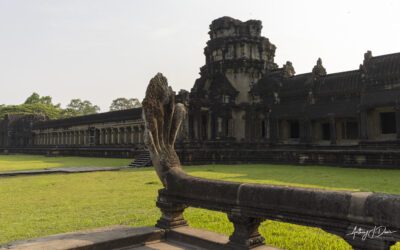
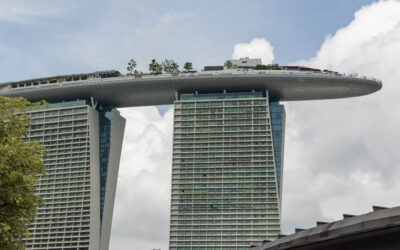
0 Comments